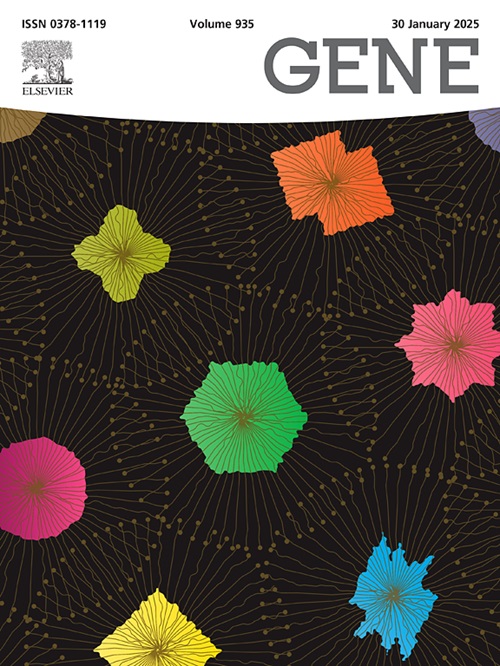Transcriptome analysis of regenerated dermis stimulated by mechanical stretch
IF 2.6
3区 生物学
Q2 GENETICS & HEREDITY
引用次数: 0
Abstract
Background
Mechanical stretch is utilized in the process of tissue expansion to promote skin regeneration, which is crucial for wound healing and organ reconstruction purposes. Enlarged dermal area is one of the significant histological characteristics of the expanded skin. However, the underlying biological processes and molecular pathways associated with dermal regeneration triggered by mechanical stretch are still not well understood.
Methods
Twelve male Sprague-Dawley (SD) rats were divided into the expansion group and sham group randomly. Upon creating a rat scalp expansion model, the dermis was isolated from the full-thickness skin in both experimental groups for RNA sequencing. This process led to the identification of differentially expressed genes (DEGs). Subsequently, we conducted Gene Ontology (GO) analysis, Kyoto Encyclopedia of Genes and Genomes (KEGG) pathway analysis, and Gene Set Enrichment Analysis (GSEA) to identify the essential biological processes associated with dermal regeneration induced by mechanical stretch, leveraging data from the DEGs. A network of protein–protein interactions (PPI) was built to detect the critical modules and central genes. The expression levels of these hub genes were evaluated using quantitative real-time polymerase chain reaction (qPCR).
Results
Increased expanded skin area and dermal thinning which represent the typical changes of expanded skin were observed in the expansion group. A total of 782 DEGs were identified in the expansion group relative to the sham group. The DEGs were associated with several biological processes, including the organization of the extracellular matrix, the enhancement of macrophage activation, and the promotion of angiogenesis, among others. Cell components encompassing Toll-like receptor 2-Toll-like receptor 6 protein complex, interstitial matrix, extracellular matrix (ECM), and collagen trimer were discovered. Molecular function categories including integrin binding, insulin-like growth factor binding, and fatty acid elongase activity were involved. The KEGG pathway analysis demonstrated the significant enrichment of pathways including the PI3K-Akt signaling pathway, fatty acid metabolism, and extracellular matrix-receptor interactions. GSEA results displayed that mechanical stretch correlated with the regulation of cell activation processes, cytokine-mediated signaling pathways, and immune system processes. PPI network resulted in the identification of 598 nodes along with a total of 5,304 interaction pairs between proteins. And ten hub genes containing Ccl2, Cxcl10, Fasn, Itgad, Cd163, Mmp9, Cd36, Tlr2, Igf1, and Wnt2 were identified by bioinformatics analysis and validated by qPCR.
Conclusions
This in vivo study for the first time revealed the DEGs related to mechanical stretch stimulated dermal regeneration and identified the involved pathways and hub genes correlated with macrophage recruitment and polarization, fibroblast proliferation and ECM production and angiogenesis, which may benefit further studies aimed at developing therapeutic strategies for facilitating expanded skin regeneration.
求助全文
约1分钟内获得全文
求助全文
来源期刊

Gene
生物-遗传学
CiteScore
6.10
自引率
2.90%
发文量
718
审稿时长
42 days
期刊介绍:
Gene publishes papers that focus on the regulation, expression, function and evolution of genes in all biological contexts, including all prokaryotic and eukaryotic organisms, as well as viruses.
 求助内容:
求助内容: 应助结果提醒方式:
应助结果提醒方式:


